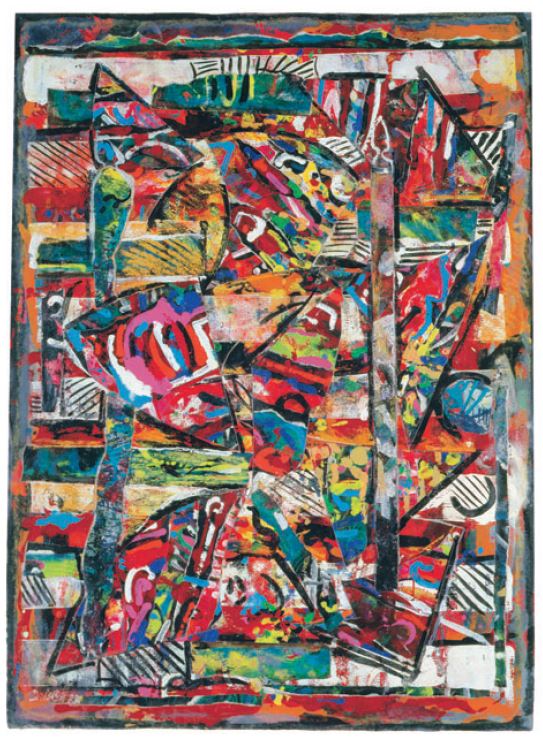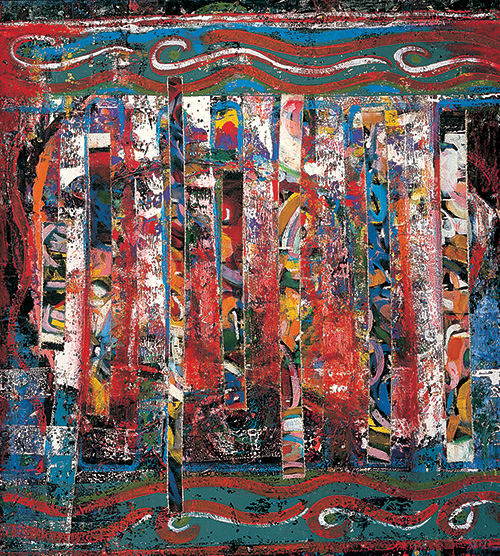David Driskell: Icons of Nature and History is on view through January 9, 2022.
David Driskell’s 1980 summer residency at Yaddo in Saratoga Springs, New York, was particularly generative. Inspired by the setting, Driskell made wall hangings and small sculptures from saplings, grapevines, and other materials, as well as paintings that exploded with color and new forms. He expanded his collage practice to include cheese cloth, torn paper, and long strips of stained cloth. Driskell drew upon his familiarity with American quilting and African strip-weaving traditions. While the aesthetic developments of his residency are most evident in his work from 1980, such as Upward Bound, Yaddo Circle, and Peak and Plane, the creative impulse to quilt with collage endured well beyond Yaddo.

David Driskell, Shaker Chair and Quilt, 1988, Encaustic and collage on paper, 31 3⁄8 × 22 5⁄8 in., Bowdoin College Museum of Art, Brunswick, Maine. Museum Purchase, George Otis Hamlin Fund, 1990.2 © Estate of David C. Driskell
A wax-based medium, encaustic is challenging to use. It provided Driskell with an excellent binder for such textured collage materials as torn strips of painted paper while also creating the effect of transparency. When burnished, the melted wax provides a surface that is brilliant and luminous, creating depth wherein the collage elements seem to dance or oscillate. Shaker Chair and Quilt recalls his mother’s quilting and refers to his deep admiration for Shaker artisans and their furnishings. Driskell frequently visited Sabbathday Lake Shaker Village in New Gloucester, Maine, not far from his Falmouth home.

David Driskell, Bahian Lace, 1988, Oil and collage on canvas, 43 × 38 in., Collection of the Estate of David C. Driskell, Maryland © Estate of David C. Driskell
Bahia is the heart of Brazil’s Afro-Brazilian culture, and its dominant African cultural influence is Yoruba. With Bahian Lace, Driskell summons the decorative splendor and spirit of carnival season in Salvador, Bahia, and the elaborate costumes of layered cloth used for the Egungun masquerade. The painting’s title alludes to the elaborate lace ornamentation of the traditional dress women wore to honor the Afro-Brazilian religion of Candomblé. The Yoruba-inspired culture and aesthetics of Bahia resonated deeply with Driskell, who made three trips to Brazil between 1983 and 1987.

Enjoyed both of these and your comments help me to see them better.